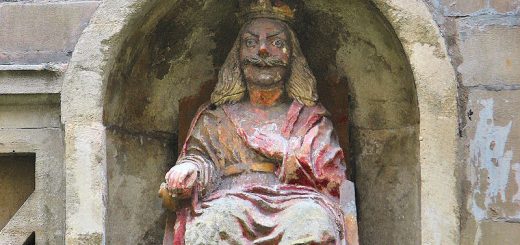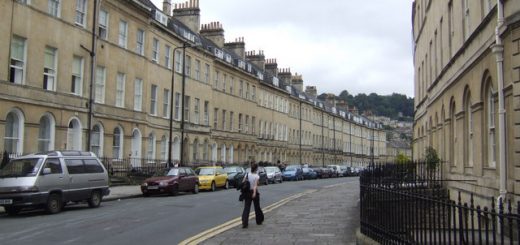The Black Dog of Kildonan
In his ‘Memorabilia domestica; or, Parish life in the North of Scotland’, Donald Sage (born 1789 – died 1869) described a treasure legend in the parish of Kildonan with a phantom Black Dog guardian attached to it. [Unfortunately I doubt that the map I attached is very accurate and should only be used to give a broad idea of this legends location, therefore I have included as much of Sage’s passage as possible to aid in identifying the actual site].
‘Below Kilphedder [Kilphedir], and in its immediate vicinity, is Soluschraggy (or the rock of light). This place is right opposite the Taobh-dorch, or dark side of the strath. Here a conical rock, about 100 feet high, rises in the middle of the farm, and on this the sun shines during the very few hours in which it is visible in winter. This was the only ocular demonstration to the inhabitants of the Taobh-dorch that it had risen at all, and hence its name. A small rill washes the base of this rock, and runs into the water. Below Soluschraggy is the place of Dalial, and behind where the farm-house stood, is a small loch about ten yards long and three broad. This loch is but a pool of stagnant water, and might very easily have been drained, but that the inhabitants regarded it with a superstitious dread. There is a tradition that a pot of gold lies in a vault below, guarded by a large black dog with two heads. It is said that a tenant once had attempted to drain the loch, and had succeeded, so that the water was all carried off. The only remuneration the unfortunate agriculturist received was to be aroused from his midnight slumbers by a visit from the black dog, which set up such a hideous howl as made the hills reverberate, and the poor man almost die with fright. Furthermore, with this diabolical music he was regularly serenaded at the midnight hour till he had filled up the drain and the loch had resumed its former dimensions.’
The Gold Rush
The story of the gold lying beneath the water could take on a whole new meaning when you consider that gold could be found in the area and Kildonan was the site of the Scottish Gold Rush of 1869. Though a nugget of gold was found in the River Helmsdale in 1818, it was the discovery of gold at Kildonan in 1868 by Robert Nelson Gilchrist and a subsequent report in a local newspaper that led to Scotlands gold rush which brough 600 miners panning for treasure in the following year. Gilchrist had discovered gold in several parts of the River Helmsdale and concentrations of the yellow metal at the Suisgill and Kildonan burns. The Gold Rush ended on 30th December 1869.




Recent Comments